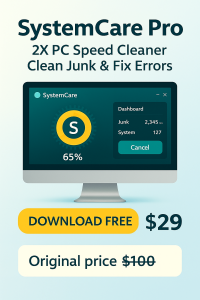In today’s digital-first world, productivity and collaboration are at the heart of every successful business. Companies are increasingly turning to cloud-based platforms like Microsoft Office 365 (now Microsoft 365) to improve efficiency, enhance teamwork, and ensure secure data access from anywhere. But moving to the cloud is not as simple as flipping a switch—it requires planning, strategy, and the right tools.
That’s where Office 365 migration comes in. Whether you’re moving from Google Workspace (formerly G Suite), migrating your SharePoint data, or simply upgrading your existing email systems, a smooth O365 migration can transform the way your business operates.
In this guide, we’ll cover everything you need to know about Office 365 migration, including benefits, challenges, methods, and best practices to ensure a hassle-free move.
What is Office 365 Migration?
Office 365 migration (or O365 migration) is the process of transferring your organization’s emails, calendars, contacts, files, and collaboration tools from your existing platform (like Google Workspace, G Suite, or on-premises servers) to Microsoft 365.
Think of it as moving your office operations to a smarter, cloud-powered environment that allows your team to work seamlessly across Outlook, Teams, SharePoint, OneDrive, and the entire Microsoft ecosystem.
Why Businesses Choose Office 365 Migration
Migrating to Office 365 isn’t just a trend—it’s a strategic decision. Here are the top reasons companies are making the switch:
1. Improved Collaboration
Microsoft Teams, SharePoint, and OneDrive make it easier for teams to collaborate in real time, regardless of location.
2. Enhanced Security
With built-in security features like multi-factor authentication, data loss prevention, and compliance tools, Office 365 helps safeguard sensitive information.
3. Scalability and Flexibility
As your business grows, you can easily scale your Microsoft 365 subscription to match your needs.
4. Cost Efficiency
Migrating to the cloud reduces dependency on physical infrastructure, lowering maintenance and operational costs.
5. Anywhere, Anytime Access
Employees can access files and applications from laptops, tablets, or smartphones, making remote work seamless.
Types of Office 365 Migration
When planning an O365 migration, it’s important to understand the different migration methods.
1. Cutover Migration
-
Best for small businesses.
-
Moves all data (emails, calendars, contacts) at once.
-
Simple but may cause downtime during the switch.
2. Staged Migration
-
Ideal for medium-sized businesses.
-
Migrates data in batches over time.
-
Minimizes disruptions while the old and new systems run in parallel.
3. Hybrid Migration
-
Best for large enterprises with complex systems.
-
Combines on-premises Exchange with Office 365.
-
Allows gradual migration with minimal risk.
4. IMAP Migration
-
Moves only emails (not calendars or contacts).
-
Commonly used when switching from third-party email systems.
Google Workspace to Microsoft 365 Migration
One of the most common scenarios is when businesses decide to migrate Google Workspace to Office 365.
Why Companies Move from Google Workspace to Microsoft 365:
-
Advanced collaboration features with Teams and SharePoint.
-
Better integration with desktop applications like Outlook and Excel.
-
Enhanced security and compliance for regulated industries.
Steps in G Suite Migration to Office 365:
-
Prepare Google Workspace environment.
-
Verify Microsoft 365 domain ownership.
-
Use Office 365 migration software or native tools.
-
Move emails, contacts, calendars, and files.
-
Train employees on the new system.
The process of migrating from Google Workspace to Microsoft 365 may sound complex, but with the right approach, it can be done smoothly without losing data or productivity.
SharePoint to Office 365 Migration
If your organization relies on SharePoint for document management and collaboration, you may need a SharePoint to Office 365 migration.
Benefits of Migrating SharePoint to Office 365:
-
Access files anywhere via OneDrive integration.
-
Enhanced collaboration with Teams.
-
Advanced compliance and governance features.
Migration Tools:
-
Microsoft SharePoint Migration Tool (free).
-
Third-party Office 365 migration software like ShareGate or AvePoint for large-scale projects.
Challenges of Office 365 Migration
While the benefits are undeniable, the migration process comes with its own set of challenges:
-
Data loss risk: Without proper planning, files or emails could get lost.
-
Downtime: Poorly managed cutover migrations can cause work disruptions.
-
Compatibility issues: Old systems or third-party apps may not integrate well.
-
User adoption: Employees need training to adapt to new tools like Teams and SharePoint.
Office 365 Migration Software – Do You Need It?
Manually handling a migration can be overwhelming. That’s why many businesses turn to Office 365 migration software.
Advantages of Using Migration Software:
-
Faster migration with minimal downtime.
-
Advanced mapping of users, data, and permissions.
-
Reduced risk of data loss.
-
Detailed reporting and monitoring during the migration.
Some popular solutions include:
-
BitTitan MigrationWiz
-
SkyKick
-
Quest On Demand Migration
-
ShareGate (for SharePoint migration)
Best Practices for a Smooth O365 Migration
To ensure your Office 365 migration is successful, follow these best practices:
-
Plan Ahead: Define your migration scope, timeline, and goals.
-
Communicate with Teams: Inform employees about the upcoming changes.
-
Backup Data: Always have a backup plan in case of unexpected issues.
-
Test Before Full Migration: Run a pilot migration with a small group of users.
-
Choose the Right Tools: Use reliable office 365 migration software.
-
Train Users: Provide resources and training sessions to help employees adjust.
The Future of Business with Microsoft 365
Migrating to Office 365 is more than just moving emails and files—it’s about transforming the way your business operates. With tools like Teams for communication, SharePoint for collaboration, and OneDrive for storage, Microsoft 365 sets the stage for modern, efficient, and secure business operations.
Whether you’re planning to migrate Google Workspace to Office 365 or handle a SharePoint to Office 365 migration, the investment in time and effort pays off with improved productivity, stronger security, and long-term cost savings.
Final Thoughts
A successful Office 365 migration can empower your business with enhanced collaboration, security, and flexibility. While the process can be complex—especially for large organizations—having the right strategy, tools, and training in place makes all the difference.
Whether it’s a G Suite migration to Office 365, migrating from Google Workspace to Microsoft 365, or even moving data from SharePoint to Office 365, the key is preparation and execution.
If your business is ready to embrace the cloud, investing in a smooth O365 migration will position you for success in the digital era.
FAQs About Office 365 Migration
Q1: How long does an Office 365 migration take?
It depends on the size of your organization and the migration method. Small businesses may complete it in a few days, while large enterprises may take weeks.
Q2: Can I migrate Google Workspace to Office 365 without third-party tools?
Yes, Microsoft provides native migration options, but office 365 migration software makes the process faster and more reliable.
Q3: What is the difference between G Suite migration to Office 365 and Google Workspace to Microsoft 365 migration?
They are the same process—Google rebranded G Suite as Google Workspace.
Q4: Do I need IT experts for O365 migration?
For complex migrations, yes. However, small migrations can be managed with basic technical knowledge and Microsoft’s tools.
Q5: How much does Office 365 migration cost?
Costs vary depending on migration tools, number of users, and service providers.
Q6: What data can be migrated to Office 365?
Emails, calendars, contacts, documents, SharePoint data, and even third-party integrations.
Q7: Is downtime unavoidable during migration?
With proper planning and staged migrations, downtime can be minimized or avoided.
Q8: Can I migrate SharePoint to Office 365 without losing data?
Yes, with proper planning and the right tools, SharePoint data can be migrated safely.
Q9: What is the biggest risk during Office 365 migration?
Data loss and user adoption challenges are the most common risks.
Q10: What’s the best Office 365 migration software?
Popular choices include BitTitan MigrationWiz, SkyKick, Quest, and ShareGate.





